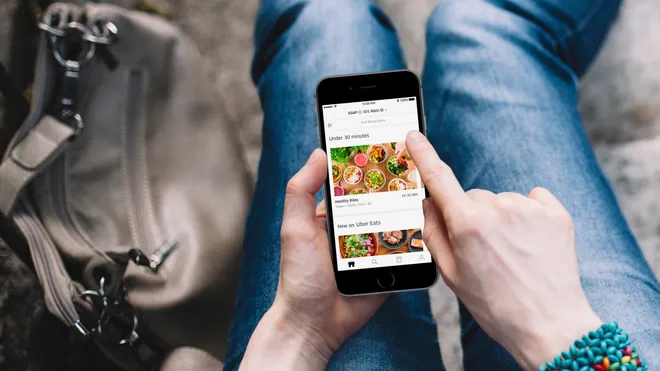Starting a cloud kitchen is an exciting journey — but without the right cloud kitchen marketing and Zomato marketing strategies, even the best ideas can fall flat. In this guide, we’ll take you through 12 actionable steps to help you build, market, and scale your cloud kitchen using data-driven marketing strategies and online visibility tools.
Step 1: Validate Your Idea for Cloud Kitchen Marketing Success
Before spending on branding and delivery, you must ensure your concept has market demand.
✅ Define Your Concept
- Choose your food category (e.g., Indian, Asian bowls, wraps).
- Identify your target audience (office-goers, families, Gen Z).
- Define your unique selling proposition.
✅ Conduct Local Market Research
- Analyze your Zomato competitors and their reviews.
- Identify menu gaps, pricing, and customer complaints.
- Understand food delivery patterns in your delivery radius.
Step 2: Create a Business Plan with a Zomato Marketing Strategy
A business plan gives your cloud kitchen direction and profitability.
Your plan must include:
- Brand vision and mission
- Menu development with pricing
- Financial forecast – setup costs, break-even, ROI
- Cloud kitchen marketing and Zomato marketing strategy
- A clear expansion roadmap
💡 Need help building a plan? RestroMark offers business blueprint solutions tailored to cloud kitchens.
Step 3: Choose the Right Location for Efficient Delivery
- Select a commercial area with a 3–5 km delivery radius to ensure food quality.
- Avoid high-rent prime areas; focus on delivery-optimized zones.
- Ensure parking space and rider convenience for Zomato/Swiggy pickups.
Step 4: Secure All Legal Licenses in India
For a professional cloud kitchen setup, you’ll need:
- FSSAI license
- GST registration
- Municipal trade license
- Fire safety compliance
- Health and hygiene certificate
🔐 RestroMark simplifies the licensing process for new entrants in cloud kitchen marketing.
Step 5: Set Up Your Delivery Kitchen Professionally
Design Your Kitchen Layout
- Create defined zones: Prep | Cook | Pack | Clean
- Ensure exhaust, drainage, and fire safety systems are in place.
Invest in Quality Equipment
- Purchase stoves, ovens, refrigeration, and packaging tools.
- Opt for commercial-grade gear to minimize downtime.
Source Smartly
- Partner with trusted vendors.
- Buy in bulk to improve margins.
Step 6: Build a Brand for Zomato Marketing Visibility
Branding is crucial for both customer recall and Zomato marketing.
- Choose a brand name that reflects your food concept
- Design a professional logo
- Use branded packaging for better customer engagement
- Maintain consistent tone and visuals across Instagram, Zomato, and Swiggy
🎯 Let RestroMark handle your brand creation and digital assets.
Step 7: Create a Smart Menu for Delivery Optimization
A well-structured menu plays a vital role in cloud kitchen marketing.
- Include only dishes that retain taste and texture after 20–30 minutes
- Standardize recipes to maintain consistency
- Use simple combos for speed
- Add SEO tags like “bestseller,” “new,” “value meal” for Zomato marketing boost
Step 8: Partner with Zomato & Other Delivery Platforms
Your visibility depends on platforms like:
- Zomato
- Swiggy
- Rapido (for hyperlocal delivery)
Tips for Zomato Marketing:
- Use keyword-rich item names and appetizing photos
- Optimize your dish tags and categories
- Collect high-quality reviews from verified buyers
📲 Use RestroMark’s Zomato SEO tools to rank higher and increase daily orders.
📎 Zomato for Restaurants
Step 9: Invest in Pre-Launch & Post-Launch Cloud Kitchen Marketing
Pre-Launch Campaign
- Run teaser campaigns on Instagram & WhatsApp
- Distribute discount codes via micro-influencers
Post-Launch Promotions
- Use geo-targeted ads on Facebook & Google
- Collaborate with food bloggers
- Run Zomato Gold or BOGO offers to push first-time orders
📈 Let RestroMark handle your digital ads, food influencer tie-ups, and platform campaigns.
Step 10: Streamline Operations for Better Ratings
- Use POS and kitchen display systems (KDS)
- Train staff to meet packaging and prep-time SLAs
- Resolve customer issues fast to protect Zomato star ratings
Step 11: Monitor KPIs for Cloud Kitchen Growth
Track and optimize:
- Monthly sales and average order value (AOV)
- Ratings on Zomato
- Repeat purchase rate
- Profit margins and wastage levels
Step 12: Scale Up Your Cloud Kitchen Business
Once the first outlet is stable:
- Launch virtual brands for snacks, desserts, or regional cuisines
- Open satellite kitchens in nearby zones
- Explore dark stores or takeaway counters
Final Thoughts on Zomato Marketing and Cloud Kitchen Growth
Success in the cloud kitchen business isn’t just about good food — it’s about systems, reviews, and visibility. Leveraging cloud kitchen marketing and Zomato marketing ensures your kitchen doesn’t just launch — it scales.
With the right strategies and help from experts like RestroMark, your cloud kitchen can become a profitable delivery powerhouse.





